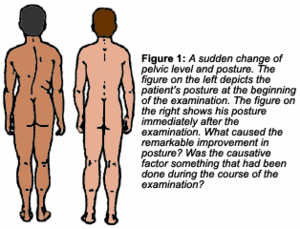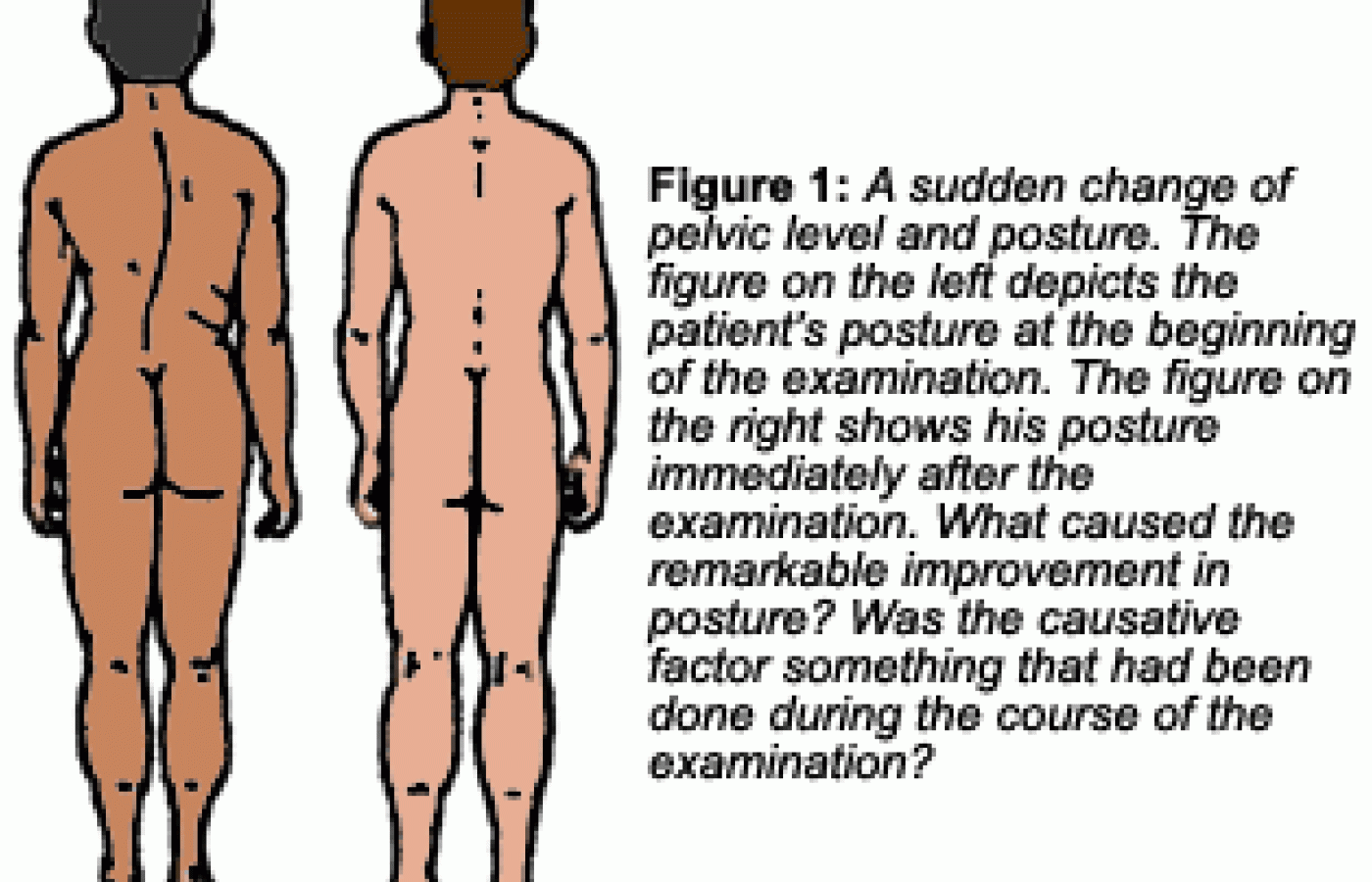Some doctors thrive in a personality-based clinic and have a loyal following no matter what services or equipment they offer, but for most chiropractic offices who are trying to grow and expand, new equipment purchases help us stay relevant and continue to service our client base in the best, most up-to-date manner possible. So, regarding equipment purchasing: should you lease, get a bank loan, or pay cash?
The Pelvis Leveling Maneuver: Clinical Impressions
Introduction
While performing a physical examination on a subject with a marked sideward tilt of the pelvis, I noted at the end of the examination that his pelvis had leveled out. The change was dramatic and perplexing. I speculated that something that had been done during the examination was responsible for the remarkable change - but I had no idea what it was. Figure 1 illustrates the postural changes I observed on that occasion.

Additional Observations
Later, that same day, with the mystery of the disappearing pelvic tilt still fresh in my mind, I treated another subject who had a lateral tilt of the pelvis. As I repeated the same examination procedure I had performed before, I kept checking the level of the subject's pelvis after each step to see if there was any change. I felt that in this way, I would be able to pinpoint the cause of any change that might occur.
Findings
As I recall, I did not really have a strong feeling that I would actually discover anything significant, but my curiosity had been kindled during the previous examination. To my great surprise, however, I did discover something quite remarkable. I found that when I had the subject squat and then stand again, a maneuver by which difficulties with coordination can be detected, an instant leveling of his pelvis occurred. Figure 2 illustrates the maneuver that brought about this astonishing result.1

Naturally, soon after this discovery, I began working on a way to put it to some practical use. My idea was to develop around the maneuver a therapeutic exercise program that would complement chiropractic adjustment of the patient. A rather serious problem became apparent almost immediately. The problem was that a great many patients were just not able to squat, due to physical conditions that prevented or contraindicated the performance of that activity. To circumvent this problem, I looked for a way to correct pelvic obliquity by means of some less arduous method.
After some trial and error, I eventually found an easier way to level a lateral tilt of the pelvis. I discovered that practically all such cases can be corrected simply by completely flexing the left thigh on the trunk while lying supine, sitting, or standing.3 It is noteworthy, however, that flexing the right thigh does not have any effect, a fact that may eventually be helpful in finding out just how the maneuver works. Figure 3 depicts an individual performing this breakthrough procedure while sitting on a chair.
Conclusions
My investigations led to some understanding of what happened during a routine physical examination that caused the sudden correction of a subject's marked lateral tilt of the pelvis. I discovered that a deep squat on flat feet will almost always obliterate a lateral tilt of the pelvis and improve the posture, as will simply flexing the left thigh on the trunk while lying supine, sitting or standing. Biomechanical analysis of this phenomenon is work in progress that will serve as the subject matter of future reports.

Notes
- A careful search of the literature failed to find any mention of this phenomenon, indicating that its discovery probably originates with the author.
- For some reason, these improvements are fleeting, lasting for only about a day or two at the most.
- The left thigh must be flexed to at least 105 degrees for this to occur.
William Levaditis, DC, QME
Ukiah, California



